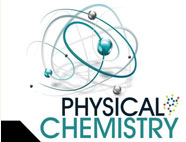


 علم الكيمياء
علم الكيمياء 
 الكيمياء التحليلية
الكيمياء التحليلية 
 الكيمياء الحياتية
الكيمياء الحياتية 
 الكيمياء العضوية
الكيمياء العضوية 
 الكيمياء الفيزيائية
الكيمياء الفيزيائية
 الكيمياء اللاعضوية
الكيمياء اللاعضوية 
 مواضيع اخرى في الكيمياء
مواضيع اخرى في الكيمياء
 الكيمياء الصناعية
الكيمياء الصناعية |
Read More
Date: 7-9-2020
Date: 9-6-2019
Date: 29-7-2020
|
Consider the following reaction occurring in a closed container (so that no material can go in or out):
H2 + I2 → 2 HI
This is simply the reaction between elemental hydrogen and elemental iodine to make hydrogen iodide. The way the equation is written, we are led to believe that the reaction goes to completion, that all the H2 and the I2 react to make HI.
However, this is not the case. The reverse chemical reaction is also taking place:
2 HI → H2 + I2
It acts to undo what the first reaction does. Eventually, the reverse reaction proceeds so quickly that it matches the speed of the forward reaction. When that happens, any continued overall reaction stops: the reaction has reached chemical equilibrium (sometimes just spoken as equilibrium; plural equilibria), the point at which the forward and reverse processes balance each other’s progress.
Because two opposing processes are occurring at once, it is conventional to represent an equilibrium using a double arrow, like this:
H2 + I2 ⇄ 2 HI
The double arrow implies that the reaction is going in both directions. Note that the reaction must still be balanced.
Write the equilibrium equation that exists between calcium carbonate as a reactant and calcium oxide and carbon dioxide as products.
Solution
As this is an equilibrium situation, a double arrow is used. The equilibrium equation is written as follows:
CaCO3 ⇄ CaO + CO2
Test Yourself
Write the equilibrium equation between elemental hydrogen and elemental oxygen as reactants and water as the product.
Answer
2 H2 + O2 ⇄ 2 H2O
One thing to note about equilibrium is that the reactions do not stop; both the forward reaction and the reverse reaction continue to occur. They both occur at the same rate, so any overall change by one reaction is cancelled by the reverse reaction. We say that chemical equilibrium is dynamic, rather than static. Also, because both reactions are occurring simultaneously, the equilibrium can be written backward. For example, representing an equilibrium as
H2+ I2 ⇄ 2 HI
is the same thing as representing the same equilibrium as
2 HI ⇄ H2 + I2
The reaction must be at equilibrium for this to be the case, however.



|
|
|
|
التوتر والسرطان.. علماء يحذرون من "صلة خطيرة"
|
|
|
|
|
|
|
مرآة السيارة: مدى دقة عكسها للصورة الصحيحة
|
|
|
|
|
|
|
نحو شراكة وطنية متكاملة.. الأمين العام للعتبة الحسينية يبحث مع وكيل وزارة الخارجية آفاق التعاون المؤسسي
|
|
|